《The Chemistry and Function of Proteins Second Edition》
| 作者 | 编者 |
|---|---|
| 出版 | Academic Press Inc. |
| 参考页数 | 455 |
| 出版时间 | 1963(求助前请核对) 目录预览 |
| ISBN号 | 无 — 求助条款 |
| PDF编号 | 812589198(仅供预览,未存储实际文件) |
| 求助格式 | 扫描PDF(若分多册发行,每次仅能受理1册) |
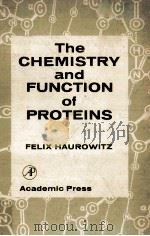
Ⅰ.Role of Proteins in Biology1
References5
Ⅱ.Purification,Isolation,and Determination of Proteins6
A.Methods of Isolation and Separation from Nonprotein Material6
B.Fractionation of Protein Mixtures12
C.The Problem of Protein Heterogeneity15
D.Qualitative Tests for Proteins19
E.Quantitative Determination of Proteins20
References22
Ⅲ.The Amino Acid Composition or Proteins25
A.Cleavage by Hydrolysis and Other Methods25
B.Determination of Rate of Hydrolysis27
C.Fractionation and Isolation of Amino Acids29
D.Amino Acids:General Properties and Specific Reactions33
E.Quantitative Determination of Amino Acids in Proteins42
References48
Ⅳ.Amino Acid Sequence and Primary Structure or the Proteins51
A.General Technique51
B.Determination of the N-Terminal Amino Acids52
C.Determination of the C-Terminal Amino Acids55
D.Partial Degradation of Proteins and Separation of Peptides57
References60
Ⅴ.Size and Shape or Protein Molecules62
A.Introduction.The Molecular Weight of Proteins62
B.Osmotic Pressure of Proteins65
C.Diffusion Rate of Proteins68
D.Sedimentation Equilibrium70
E.Sedimentation Velocity of Proteins72
F.Viscosity of Protein Solutions76
G.Flow Birefringence79
H.Polarization of Fluorescence80
I.Light Scattering by Proteins81
J.Other Methods Used for the Determination of Molecular Weights and the Shape of Proteins in Their Solutions83
K.Electron Micrography of Dry Proteins83
L.X-Ray Analysis of Protein Crystals85
M.Comparison of Molecular Weights and Shapes Found by Different Methods86
References89
Ⅵ.Electrochemistry and Hydration or Proteins92
A.Amino Acids as Dipolar Ions92
B.Ionization of Proteins98
C.Electrophoresis of Proteins104
D.Hydration and the Specific Volume of Solutes111
E.Hydration of Dry Protein115
F.Hydration of Proteins in Solution118
G.Solubility of Proteins in Water121
H.The Dielectric Properties of Protein Solutions123
I.The Role of Proteins in Energy Transmission127
References129
Ⅶ.The Internal Structure of Globular Proteins132
A.General Considerations132
B.Examination of Globular Proteins by X-Ray Diffraction134
C.Refractivity and Absorbancy of Protein Solutions140
D.The Optical Rotation and Rotary Dispersion143
E.Cross-Links in Globular Proteins149
F.Chemical Reactivity of Proteins154
G.The Problem of Branched or Cyclic Peptide Chains159
H.Denaturation of Proteins161
I.Kinetics and Thermodynamics of Denaturation166
J.Proteins in Interfaces174
References178
Ⅷ.Albumins,Globulins,and Other Soluble Proteins184
A.Classification of Soluble Proteins184
B.Proteins of the Blood Serum184
C.Fibrinogen and Its Conversion to Fibrin193
D.Milk Proteins197
E.Egg Proteins199
F.Vegetable Proteins202
G.Protamines and Histones204
References207
Ⅸ.Structural Proteins(Scleroproteins and the Muscle Proteins)211
A.General Remarks211
B.Collagen and Gelatin212
C.Keratin217
D.Fibroin221
E.Other Scleroproteins222
F.Biological Importance of Structural Proteins223
G.Muscle Proteins(Contractile Proteins)224
References230
Ⅹ.Combination of Proteins with Other Substances234
A.Intermolecular Forces234
B.Combination of Proteins with Inorganic Ions237
C.Combination of Proteins with Organic Dyes231
D.Combination of Proteins with Other Organic Substances238
References243
Ⅺ.Conjugated Proteins245
A.Survey on Composition and Properties245
B.Lipoproteins246
C.Glycoproteins(Mucoproteins)250
D.Metalloproteins256
E.Hemoglobin:General Properties261
F.Hemoglobin:Combination with O2 and Other Ligands.Conformation264
G.The Specificity of Hemoglobins271
H.Other Chromoproteins277
I.Nucleoproteins279
References289
Ⅻ.Enzymes:Proteins with Enzymatic Properties296
A.The Function of Proteins as Enzymes and Apoenzymes296
B.The Active Site of Enzymes299
C.Specificity of Enzymes303
D.The Enzyme-Substrate Complex307
E.Kinetics of Enzyme Reactions310
F.Proteinases and Peptidases315
G.Other Nonoxidative Enzymes321
H.Enzymes Involved in Oxidoreduction327
References340
ⅩⅢ.Proteins with Hormone Action347
A.General Remarks347
B.Thyroglobulin and the Thyroid Hormones347
C.Insulin349
D.Oxytocin and Vasopressin352
E.The Melanocyte-Stimulating Hormone(MSH)or Intermedin354
F.Adrenocorticotropic Hormone(ACTH)or Corticotropin355
G.Other Hormones of the Anterior Pituitary Lobe356
H.Other Protein Hormones and Peptides with Hormone-like Action358
References360
ⅩⅣ.Toxins(Toxic Proteins)363
A.Bacterial Exotoxins363
B.Bacterial Endotoxins364
C.Cyclic Peptides365
D.Other Toxins366
References367
ⅩⅤ.Role of Proteins in Immunological Reactions369
A.Antigens369
B.Antibodies:Their Detection and Isolation374
C.Antigen-Antibody Interaction379
D.The Mechanism of Antibody Formation384
E.Complement389
References390
ⅩⅥ.Protein Biosynthesis394
A.Introduction394
B.Amino Acid Supply395
C.Nonenzymatic Formation of Peptide Bonds399
D.Formation of Peptide Bonds by Proteolytic Enzymes402
E.Activation of Amino Acids for Protein Biosynthesis405
F.Incorporation of Amino Acids into Ribonucleoprotein Particles409
G.The Sites and the Rate of Protein Biosynthesis411
H.The Problem of Peptide Intermediates416
I.The Role of DNA and Messenger RNA in Protein Biosynthesis419
J.The Action of Analogs,Mutagens,and Inducers421
K.Templates and the Coding Problem423
References440
INDEX445
1963《The Chemistry and Function of Proteins Second Edition》由于是年代较久的资料都绝版了,几乎不可能购买到实物。如果大家为了学习确实需要,可向博主求助其电子版PDF文件(由 1963 Academic Press Inc. 出版的版本) 。对合法合规的求助,我会当即受理并将下载地址发送给你。
高度相关资料
-

- Chemistry and technology of the cosmetics and toiletries industry second edition
- 1992 Blackie Academic and Professional
-

- THE CHEMISTRY AND TECHNOLOGY OF PAINTS SECOND REVISED EDITION
- 1916 D.VAN NOSTRAND COMPANY
-
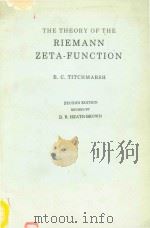
- The theory of the Riemann zeta-function Second Edition
- 1986 Oxford University Press; Clarendon Press
-
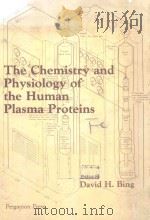
- THE CHEMISTRY AND PHYSIOLOGY OF THE HUMAN PLASMA PROTEINS
- 1979 PERGAMON PRESS
-

- THE CHEMISTRY OF THE AMINIO ACIDS AND PROTEINS
- 1955 PROFESSOR OF BIOCHEMISTRY UNIVERSITY OF CALIFORNIA
-
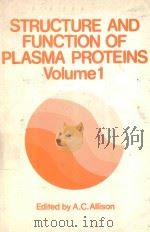
- STRUCTURE AND FUNCTION OF PLASMA PROTEINS VOLUME 1
- 1974 PLENUM PRESS
-

- GUTS THE FORM AND FUNCTION OF THE DIGESTIVE SYSTEM SECOND EDITION
- 1979 UNIVERSITY PARK PRESS
-
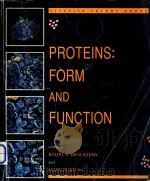
- Proteins : form and function
- 1990 Elsevier Trends Journals ; New York
-

- The chemistry of cereal proteins second edition
- 1996 CRC Press
-

- VITAMINOLOGY THE CHEMISTRY AND FUNCTION OF THE VITAMINS
- 1949 THE WILLIAMS AND WILKINS COMPANY
-
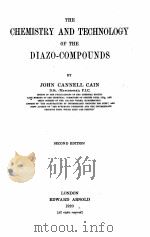
- THE CHEMISTRY AND TECHNOLOGY OF THE DIAZO-COMPOUNDS SECOND EDITION
- 1920 EDWARD ARNOLD
-
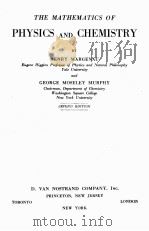
- THE MATHEMATICS OF PHYSICS AND CHEMISTRY SECOND EDITION
- 1956 D. VAN NOSTRAND COMPANY INC.
提示:百度云已更名为百度网盘(百度盘),天翼云盘、微盘下载地址……暂未提供。➥ PDF文字可复制化或转WORD


